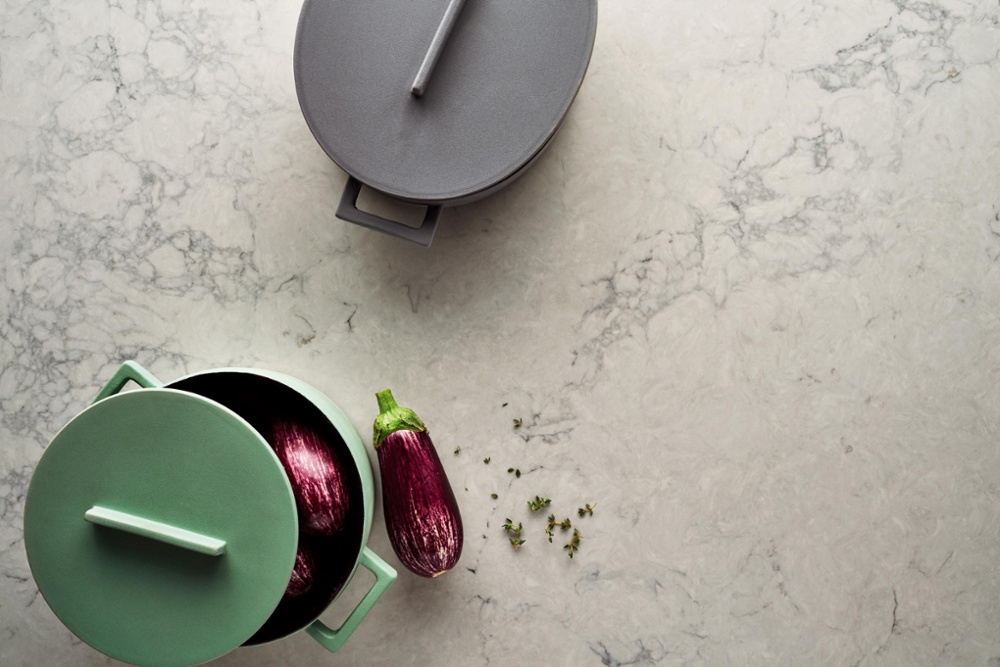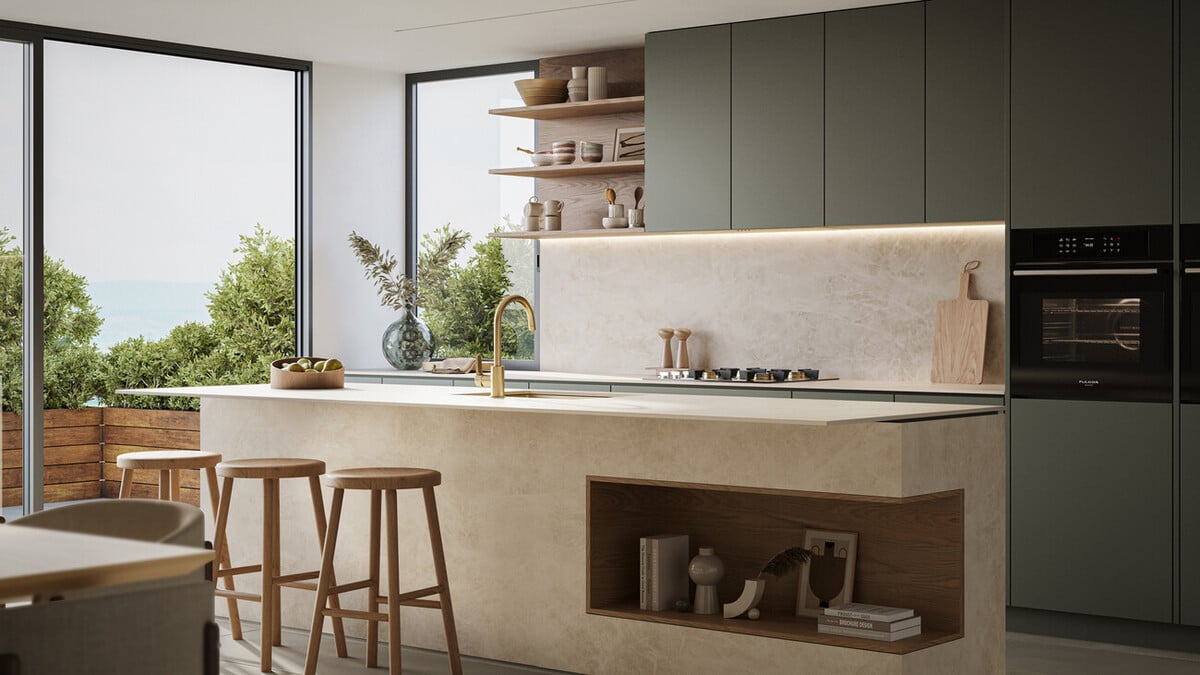
We may be biased, but we’re firm advocates of the kitchen worktop being one of the central concepts to your entire design, alongside cabinetry and theme. The worktop not only bears the brunt of daily life but also takes up such a significant amount of space that your selection warrants careful consideration – and not just on practicalities.
The aesthetic of your worktop can change the overall look and feel of your entire kitchen in various ways, with each aspect potentially having an influence over which material you opt for…
Colour, pattern and tactility
One of the most obvious visual aspects to a kitchen worktop is colour. The colour you choose can have various effects – from brightening your mood to creating the perception of more space. Some materials, like marble and concrete, are fairly limited in terms of colour choice because of their natural origins, often showing variants between different slabs, which can lead to complications when covering a wider surface area.
The likes of wood, laminate and quartz are able to offer much more colour choice – types of wood feature a darker or lighter tone and different grains, whilst laminate and quartz are specifically created to offer a more diverse spectrum. Quartz, in particular, has been carefully engineered to showcase a broad range of colours – alongside truly unique patterns that add an incomparable element to your worktop.
Caesarstone has become particularly renowned in the industry for its quartz designs, demonstrating a level of intricacy and consideration not often found with other worktop materials that are simply cut and created from natural elements. With a specific aim to push both technical and creative boundaries, every slab of Caesarstone quartz has undergone a unique design process whereby science and art combine to create a worktop that’s both beautiful and practical.
In terms of design, whilst many of the core range concepts originate from natural stones like granite and marble, and industrial textures, like concrete, the process is so multi-faceted that the end result actually transcends the original inspiration to become something completely unique. Taking inspiration from the world around them, the design team appreciate just how much of an impact your worktop can have on the space surrounding it, thus they endeavour to create a product that inspires you, too.
Caesarstone’s Chief Designer, Mor Krisher, explains, “We are visual creatures and we respond to the colour and patterns that surround us, good or bad. I think Caesarstone plays a role in creating environments that inspire, that connect us with nature or that provide the tactility that is so important to human beings.” He concludes, “When I show someone a new Caesarstone product for the first time, they always end up with their hand repeatedly playing across the surface as we talk, often quite unconsciously. That’s when I know we’ve done our job.”
Style, longevity and practicality
Another key element of how a worktop can implicate your overarching design is your choice of theme. As such a fundamental element of your kitchen, the worktop has the power to inform the style – some materials simply don’t match, like stainless steel in a country farmhouse, for example.
More often than not, most worktop materials can fit any chosen theme, but it’s still an important consideration factor. If you have your heart set on marble as well as a Scandinavian aesthetic, you may need to think a little outside of the box with how the other elements of your kitchen will convey the theme. Generally speaking, marble suits traditional, classic designs, granite works well in contemporary spaces and wood can work well in either. Because of the diverse range available with quartz, it can essentially fit with any theme.

You’ll want your kitchen to stand the test of time considering the significant level of investment involved, and your worktop can help improve its overall longevity. As such a pivotal element, the worktop obviously needs to be practical and durable, but the look and feel also plays a role in how well it ages. Marble can discolour, whilst wood can warp and fade. Quartz, on the other hand, with simple maintenance, will look as good as the day you had it fitted.
Ultimately, how you use your kitchen can determine a lot about your worktop, and in turn, significantly inform your design. For example, if you want to incorporate a large island with a waterfall edge, you can really make a centrepiece of your worktop. It’s rare that anyone ever designs a kitchen and feels they’ve got too much worktop space – there are always more reasons to fit as much as you can into the space you have, making it such a fundamental aspect of your kitchen design.
Images Source: Caesarstone




